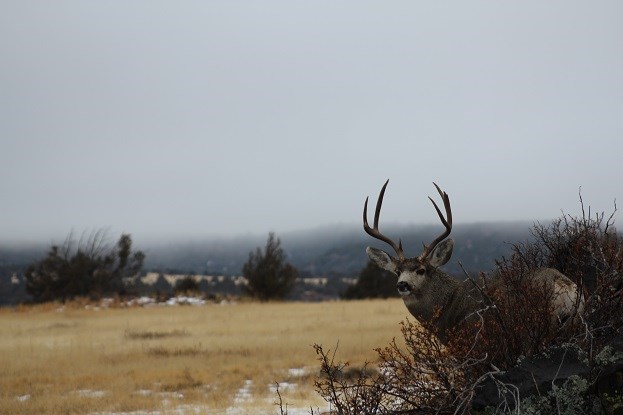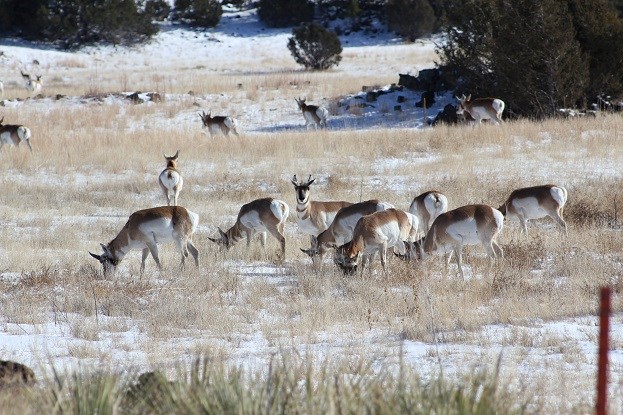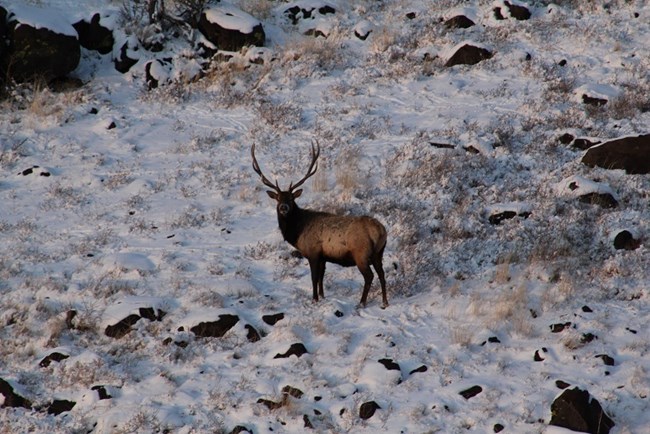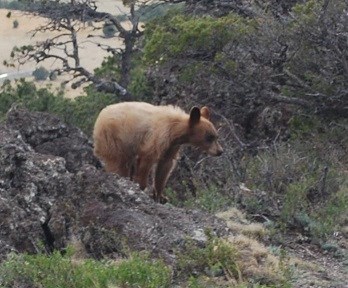|
Large mammals such as deer and bear will travel through the monument in search of food and shelter. Living in an area with an arid climate and limited resources, these animals must roam long distances in order to find the means to survive. The monument, though it provides no permanent water source, serves as one of the many places mammals will seek for browsing, scavenging, and hunting.

NPS Photo 
NPS Photo 
NPS Photo Elk (Cervus canadensis) are an extremely large species of deer and one of the largest mammals inhabiting North America. Elk are primarily found in forest and forest-edge habitat feeding on grasses, leaves, and bark. Elk may reach up to 8-10 feet long and weigh 600-1000 pounds. As true for many species of deer, elk migrate in the spring and fall which accounts for their occasional appearance at Capulin Volcano. 
NPS Photo
Scat and tracks belonging to coyote, fox, and bobcat are routinely found on hiking trails within the park. Other less noticeable mammals are present within the park, though evidence of their habitation is not as obvious. Trees have been stripped of bark by porcupines. Mice and gopher leave piles of dirt behind as they burrow. Pine cones chewed and stripped of seeds reveal the meals of rock squirrels and least chipmunks.
Full wildlife surveys have not been conducted in the park in recent years. A checklist of mammals from 1973 and a partial survey by the New Mexico Natural Heritage Program done in 2002 are the most current information we have available.
|
Last updated: April 24, 2025
